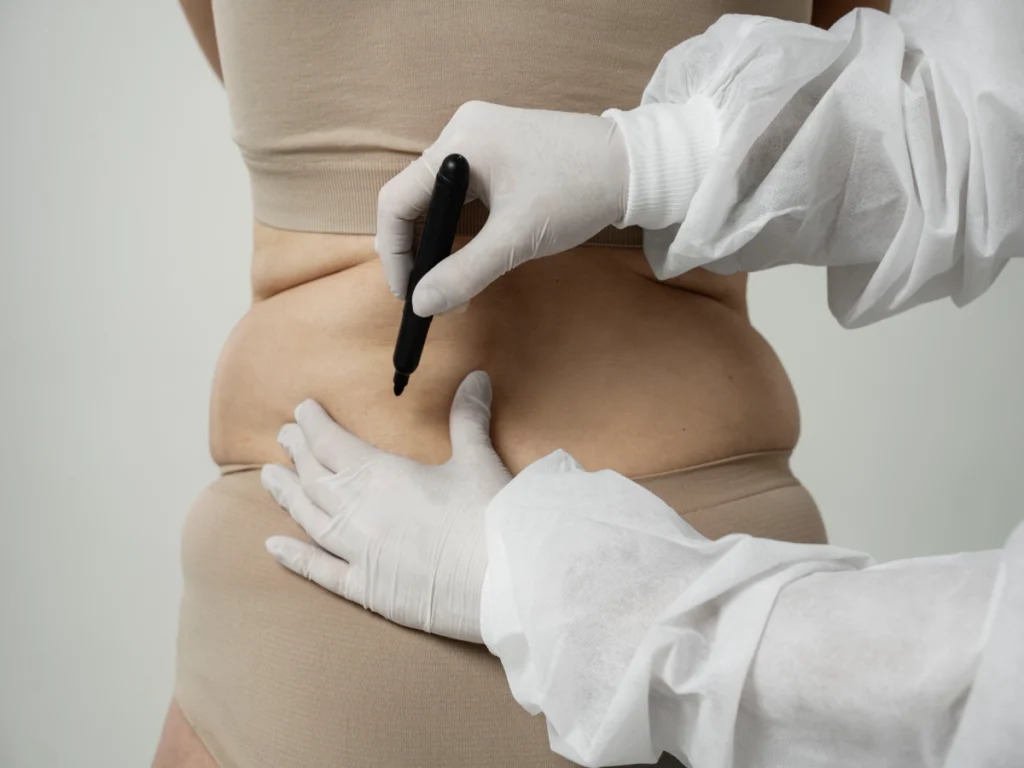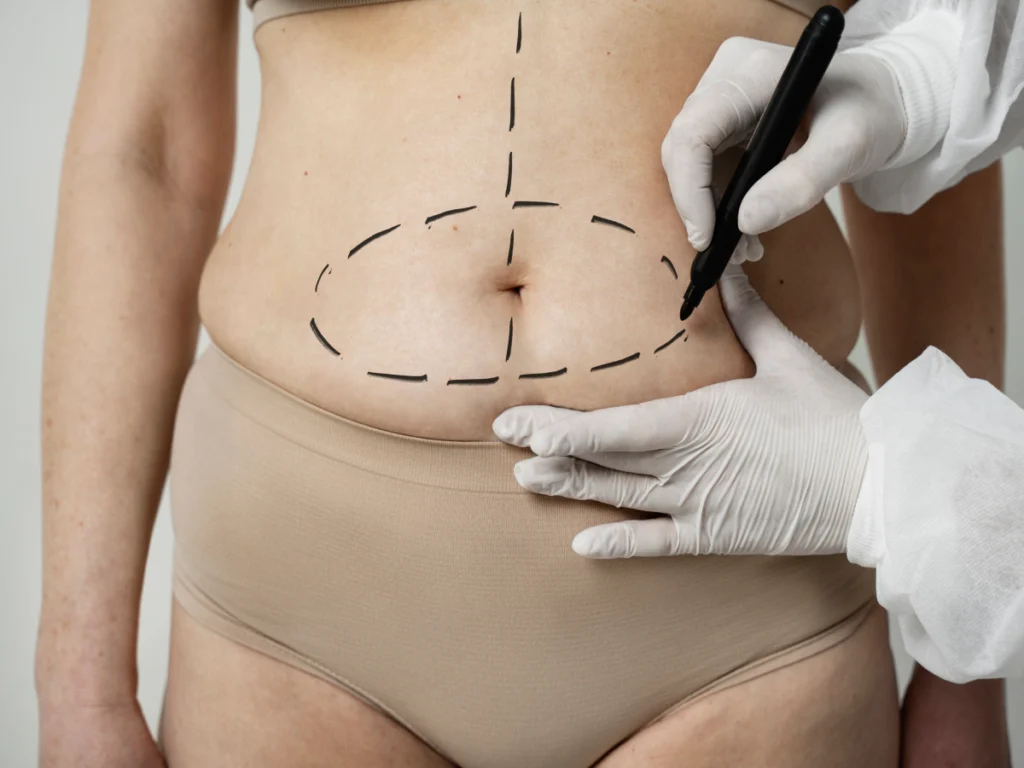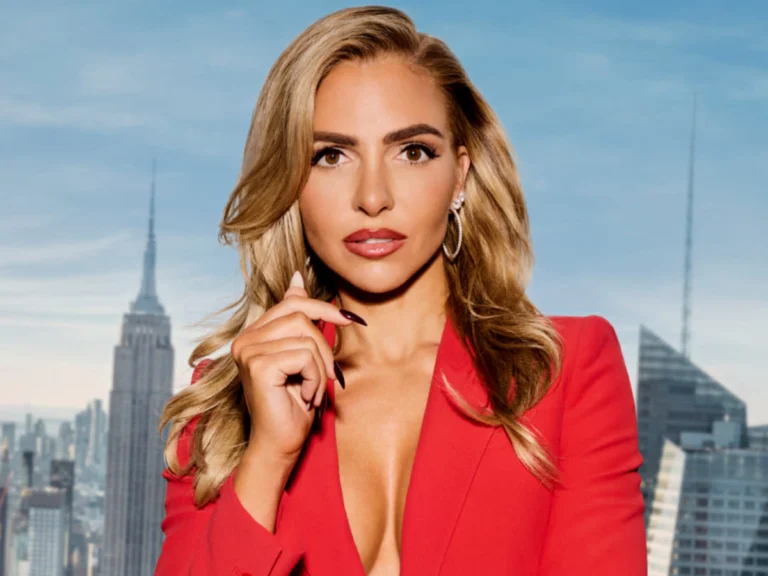An abdominoplasty, which is another name for a tummy tuck, is a big cosmetic surgery that removes extra skin around the lower stomach. Sometimes, the surgeon must sew the abdominal muscles (ABS) back together. Making the middle smaller and tighter is usually the goal.
Get a Free consultation with experts
Most of the time, people choose this treatment after they’ve lost a lot of weight, like during pregnancy or through diet and exercise. Without surgery, it might be challenging to get rid of the extra skin.
Tummy tuck procedure

Before the procedure
During the meetings before your tummy tuck, you may need to:
- Do tests in the lab.
- Fill out a medical exam.
- stop smoking
- Stop taking some supplements and medicines, like aspirin and ibuprofen, which thin the blood.
Before the surgery, you won’t be able to eat or drink anything for several hours. Your doctor will give you a clear schedule to follow.
During the procedure
Here are the things that will happen during your tummy tuck, step by step:
- Anesthesia: Before the surgery begins, we will administer general anesthesia to ensure you are asleep and pain-free throughout the procedure.
- Making an incision: Your surgeon will make the appropriate cuts once you are asleep. To achieve a full tummy tuck, the cut will go from hip bone to hip bone.
- Muscle repair: The surgeon will repair the abdominal muscles and, if necessary, tighten them to improve the appearance of the area once the cuts have healed.
- Getting rid of extra skin and fat: The surgeon will use incision (for skin), liposuction (for fat), or other methods to get rid of any extra skin and fat from the abdomen.
- Repositioning the belly button: If you are getting a full tummy tuck, your surgeon may move your navel so that you look more natural after the surgery.
- Closure: After making the necessary adjustments, we will stitch or use another method to close the cuts.
- Recovery: After the surgery, they will take you to a recovery area to monitor your gradual awakening from the anesthesia. Most of the time, you can go home the same day.
tummy tuck recovery
Getting better after a tummy tuck can take a few weeks. Here’s a rough outline of what to expect while you’re healing:
Week 1: You will feel some pain and soreness, but you can take medicine to help.
Your surgeon may place drains to remove extra blood from the surgery site. For the first two weeks, you’ll have to wear a surgery body-shaping device all the time.
For the next month, you’ll wear it as much as possible. You should do some light walking to improve your circulation, but the most important thing is to rest a lot.
Week 2: You should feel better and be able to move around better. Some people will be able to go back to work and do some light daily tasks.
Week 4: Most of your usual tasks should be possible.
Week 6: If the doctor says it’s okay, you may be able to start doing more intense exercises again.
- Who is a good candidate for tummy tuck surgery?
A tummy tuck is a treatment that is very specific to each person. You should do it for yourself, not to impress others or meet an ideal.
Generally, you might be a good candidate for a tummy tuck if:
- You are in good health, and your weight has stayed the same.
- You are reasonable in your goals.
- You do not smoke.
- You are unhappy with how your stomach looks.
Benefits and risks

Benefits of tummy tuck surgery
Eliminates excess skin: This can make patients feel more at ease when wearing tighter clothing and engaging in physical activity.
Takes Away the Hanging Belly After a C-Section: A belly tuck can get rid of this hanging, extra skin, making the torso flatter and more defined.
Stretch marks improve: When a tummy tuck removes excess skin, the stretch marks also improve. Because of this, a tummy tuck may be a beneficial way to get rid of abdominal stretch marks.
Abs: A tummy tuck can get rid of extra skin that hides the abdominal muscles. After surgery, when the swelling goes down, patients enjoy a more rounded stomach with a better outline of the abs.
Risks
A tummy tuck carries a variety of risks, including
Seroma is the name for fluid buildup under the skin. If you leave drainage tubes in place after surgery, they can help lower the risk of getting too much fluid. Your doctor may also use a needle and tube to remove blood after surgery.
Wounds are not well healed. Along the cut line, the skin can heal slowly or start to split. You may receive antibiotics before, during, and after treatment to prevent illness.
Unexpected scars. A stomach tuck leaves a lasting scar, typically placed along the bikini line for easy concealment. Individuals vary in the length and visibility of their scars.
Tissues are damaged. Deeply buried fat in your stomach region may sustain damage or even die during a tummy tuck procedure. Smoking is more likely to cause tissue damage. Depending on the size of the wound, the tissue may heal naturally or require surgical intervention.
How much does a tummy tuck cost?
In Turkey: In 2024, the price of an abdominoplasty (tummy tuck) runs from about $1,500 to $4,000, based on how extensive the surgery is and where the clinic is located.
Read more: Stomach Liposuction Cost
In the United Kingdom: it costs between £4,500 and £6,000 to get a tummy tuck in the UK.
In America: the price of a full tummy tuck is between $8,000 and $12,000.
Book Your Free Consultation for Tummy Tuck at Med Consulto
At Med Consulto, we understand that feeling good about your body is essential. That’s why we’re offering a Free Consultation with our expert surgeons to discuss how a tummy tuck can help you achieve the toned, flat stomach you’ve always wanted.


